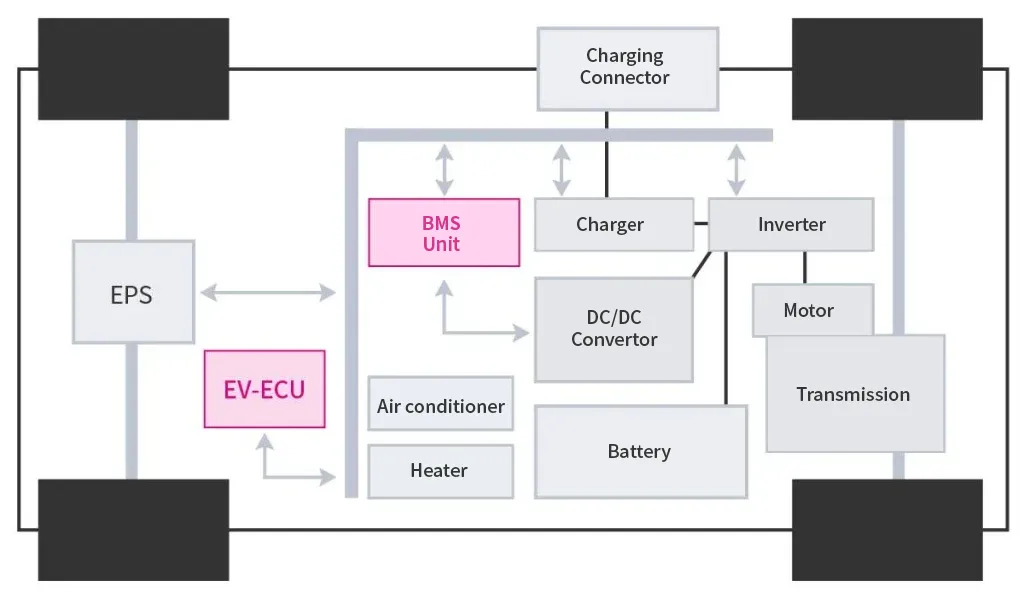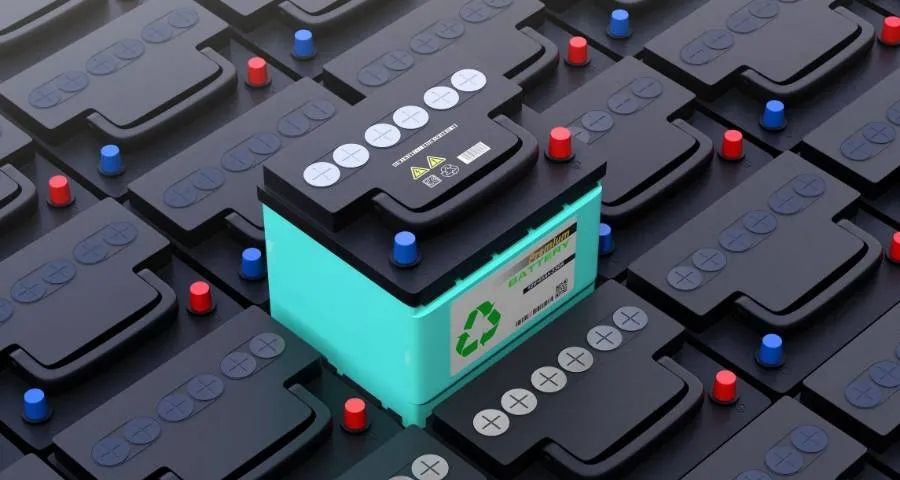Applications
Adoption of FeRAM in BMS
The Global Standard for EV Batteries:
100 trillion rewritable cycles for greater efficiency and reuse
FeRAM is also used in the Battery Management System (BMS) that manages the batteries of electric vehicles (EVs). Highly rewrite-resistant FeRAM can be used to record and retain data necessary for extending battery life and evaluating battery reuse.
Table of Contents
What is BMS?
Batteries used in electric vehicles (EVs) are composed of multiple cells, each of which has its own performance and service life. The BMS (Battery Management System) collects temperature, voltage, and current data from the monitoring unit of each battery cell and instructs it to maintain the charge balance of each cell. This ensures that weak cells are charged frequently and strong cells are discharged frequently to preserve performance and extend battery life. Highly monitored data is stored in memory, but battery performance is maximized by employing FeRAM, which is guaranteed to withstand 10 trillion rewrites at 125°C operation. As shown in the figure below, the EV battery powers the air conditioner and heater as well as the motor. Battery usage is monitored by writing data to the FeRAM in the ECU and BMS unit section.

Advantages of using FeRAM
FeRAM is used by the world's leading EV battery manufacturer, and the use of FeRAM in EV BMS offers the following benefits.
Improved battery performance

Vehicle manufacturers are subject to requirements with regard to battery life statements, improving battery performance will become an increasingly important issue in the future. This enables accurate battery information to be retained at the time of an event.
The BMS has the following five functions.
- A function to prevent over-charge and over-discharge of cells
- Function to prevent cell over-current
- A function to manage cell temperature
- Function to calculate the remaining battery capacity (SOC)
- A function to equalize cell voltage (cell balance)
*Taken from the websites of Industrial Lithium Ion Battery Development and Manufacturing and Panasonic.
A cell is a single battery (unit cell) and is the smallest component unit in a battery. As the battery is used, the speed of degradation changes from cell to cell, so it is adjusted to equalize the degradation rate so that the battery as a whole lasts longer. For example, excessive battery temperatures can cause premature degradation and ignition. Fast/frequent writing allows for close monitoring of measured temperatures and adjustment of battery cell charge, etc. to maintain healthy temperatures.
Constant logging for battery reuse evaluation
Today's EV batteries are being developed and regulated not only to extend their life, but also to reduce their environmental impact through reuse. The use of FeRAM, which can withstand 10 trillion rewrites, enables constant logging while the battery is in use.

Global Trends in Battery Reuse
Europe
In the EU, a regulation called “Battery Passport” is expected to become law from 2025 onward, requiring the logging of batteries. The purpose is not only to assess the need for battery repair and reusability, but also to evaluate criteria such as driver environmental friendliness and social reliability based on driving data. The “Battery Passport” is being launched as part of the “Digital Product Passport” initiative, which aims to treat each individual's electronic product-specific information as a passport to be used in the future for data linkage in the supply chain and for reuse to protect the environment.
China
Several companies in China have adopted FeRAM, as the Chinese State Administration for Standardization (SAC) standard requires data logging once every 150 milliseconds. EVs are being promoted as a national policy, and BMS is expected to spread along with them. Several automakers are also involved in data linkage with Europe.
United States
Although there is no standardized standard like in Europe or China, major EV manufacturers are promoting battery reuse through BMS, and a number of battery recycling companies are expanding their business. Several U.S. recycling companies are also partnering with European and Japanese automakers to enter the ever-growing used battery market.
Japan
The Ministry of Economy, Trade and Industry's Mobility DX Strategy for 2024 pays particular attention to European battery regulations, and the establishment of a traceability management system in Japan and collaboration with European data platforms are also being discussed.
Summary
In BMS, FeRAM's fast write speed and high rewrite endurance enable accurate data acquisition and high-frequency data logging, improving battery life expectancy and capturing in-use data for reuse. FeRAM is a solution that can respond to these latest trends.
